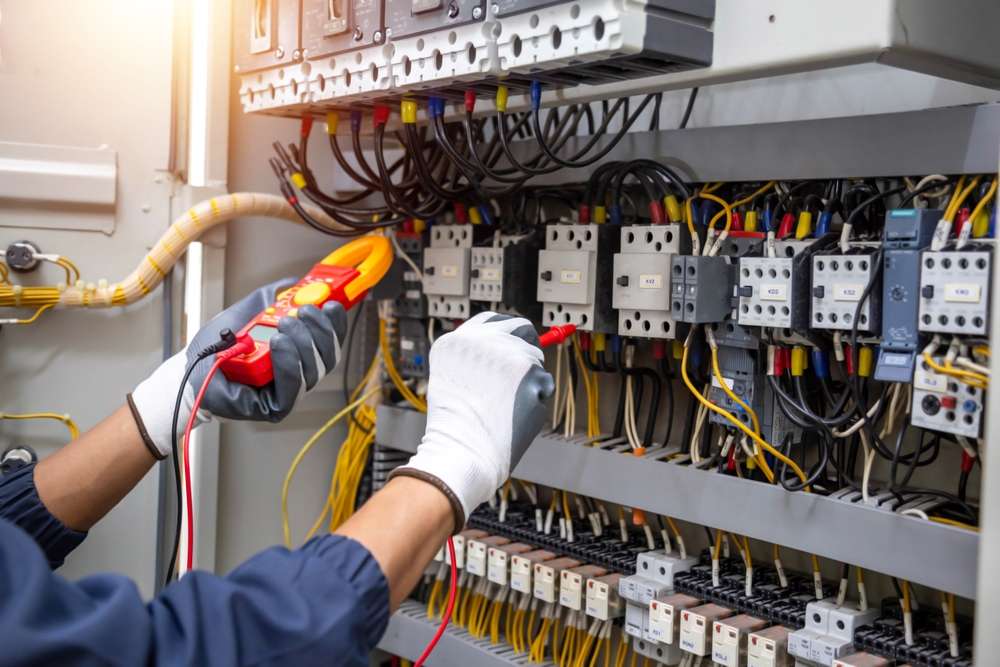Comprehensive Guide to Efficient Electrical Installation Services
Efficient electrical installation services are essential for ensuring safe, reliable, and cost-effective power systems in residential, commercial, and industrial settings. A well-planned installation not only enhances energy efficiency but also reduces downtime, prevents electrical hazards, and supports the long-term performance of electrical infrastructure. This guide explores key strategies, best practices, and modern technologies that help achieve precision, safety, and sustainability in electrical installations.

Electrical installation services encompass a wide range of specialized tasks that require technical expertise, proper planning, and strict adherence to safety standards. Whether for residential, commercial, or industrial applications, efficient electrical installations are fundamental to ensuring the safety, functionality, and longevity of electrical systems. This guide provides comprehensive insights into the various aspects of electrical installation services, from selecting qualified professionals to understanding technological advancements in the field.
Importance of Hiring Qualified Professionals
The decision to hire qualified electrical professionals is not merely a matter of convenience but one of safety and compliance. Licensed electricians possess the necessary training, certification, and experience to handle complex electrical systems safely. They understand local building codes, national electrical standards, and safety protocols that protect both property and lives.
Professional electricians can accurately assess electrical needs, identify potential hazards, and implement solutions that prevent electrical fires, shocks, and other dangerous situations. Their expertise extends to proper wire sizing, circuit protection, load calculations, and grounding techniques—all critical components of a safe electrical installation.
Furthermore, qualified professionals provide documentation and warranties for their work, ensuring accountability and peace of mind. Their installations typically pass inspections the first time, avoiding costly delays and rework that often result from DIY or unlicensed work. In many jurisdictions, electrical work performed by unlicensed individuals may violate building codes, invalidate insurance policies, and create liability issues for property owners.
Understanding Different Types of Electrical Services
Electrical installation services encompass a diverse range of specialized offerings tailored to different environments and requirements. Residential electrical services focus on home wiring, panel upgrades, lighting installations, and smart home integration. These services prioritize safety, energy efficiency, and meeting the everyday needs of households.
Commercial electrical services address the more complex requirements of business environments, including three-phase power systems, commercial-grade lighting, backup power solutions, and specialized equipment installations. These services often involve working around business hours to minimize disruption and implementing systems that can handle higher loads and continuous operation.
Industrial electrical installations represent the most complex category, involving high-voltage systems, specialized machinery connections, automated control systems, and comprehensive safety protocols. These installations require extensive planning, engineering expertise, and coordination with other building systems.
Additional specialized services include emergency electrical repairs, electrical system maintenance, energy efficiency audits, and renewable energy installations such as solar panel systems. Each type of service requires specific expertise, tools, and approaches to ensure optimal results.
The Role of Technology in Electrical Installations
Technology has revolutionized electrical installation practices, introducing innovations that enhance efficiency, safety, and functionality. Smart electrical systems now allow for remote monitoring and control of lighting, climate, security, and appliances through mobile applications and voice commands. These systems not only provide convenience but also contribute to energy conservation through automated scheduling and usage optimization.
Building Information Modeling (BIM) technology enables electricians to visualize and plan installations in three dimensions before physical work begins. This approach identifies potential conflicts with other building systems, optimizes conduit routing, and improves overall installation efficiency. Similarly, advanced diagnostic tools help electricians identify issues more quickly and accurately, reducing troubleshooting time.
Energy management systems have become increasingly sophisticated, allowing for detailed monitoring of power consumption patterns and implementing strategies to reduce usage during peak demand periods. These systems often integrate with renewable energy sources like solar panels to maximize self-consumption and minimize grid dependency.
Wireless technology has also transformed electrical installations by reducing the need for extensive wiring in certain applications. Mesh networks, Bluetooth, and Wi-Fi-enabled devices create flexible control options without the constraints of traditional hardwiring, particularly beneficial in retrofit projects where structural modifications are challenging.
Planning for Efficient Electrical Installations
Successful electrical installations begin with thorough planning and assessment. This process involves evaluating current and future electrical needs, creating detailed load calculations, and developing comprehensive wiring diagrams. For renovations or upgrades, the assessment must include an inspection of existing systems to identify potential issues or limitations.
A well-designed electrical plan accounts for code compliance, energy efficiency goals, budget constraints, and aesthetic considerations. It specifies appropriate materials, equipment locations, circuit configurations, and safety features. This planning phase should involve collaboration between property owners, architects, contractors, and electrical professionals to ensure all requirements are addressed.
Proper planning also includes obtaining necessary permits, scheduling inspections, and coordinating with other trades working on the project. This coordination is particularly important when electrical work must integrate with plumbing, HVAC, or structural elements. Establishing clear timelines and communication protocols helps prevent delays and ensures that electrical work proceeds efficiently within the broader construction schedule.
Cost Considerations for Electrical Installation Services
The cost of electrical installation services varies widely based on project scope, complexity, location, and materials used. Understanding these factors helps in budgeting appropriately and evaluating service proposals from different providers.
| Service Type | Average Cost Range | Primary Cost Factors |
|---|---|---|
| Residential Rewiring | $1,500 - $10,000 | Home size, accessibility, material quality |
| Panel Upgrade | $1,000 - $4,000 | Amperage increase, brand, complexity |
| Commercial Installation | $5 - $15 per square foot | Building type, system complexity, code requirements |
| Industrial Electrical | $10,000 - $100,000+ | Equipment specifications, safety systems, power requirements |
| Smart Home Integration | $2,000 - $15,000 | Number of systems, automation level, equipment quality |
Prices, rates, or cost estimates mentioned in this article are based on the latest available information but may change over time. Independent research is advised before making financial decisions.
Labor costs typically constitute 40-60% of electrical installation expenses, with higher rates for specialized expertise or emergency services. Material costs vary significantly based on quality, with commercial-grade components costing substantially more than residential options but offering greater durability and performance.
Additional cost factors include permit fees, inspection costs, and potential structural modifications needed to accommodate new electrical systems. While it may be tempting to choose the lowest bid, quality electrical work requires proper materials, adequate time, and experienced professionals—cutting corners often leads to greater expenses through repairs, replacements, or addressing code violations.
Safety Standards and Compliance
Electrical installations must adhere to strict safety standards and regulatory requirements. In the United States, the National Electrical Code (NEC) serves as the primary guideline, updated regularly to address emerging technologies and safety concerns. Local jurisdictions may impose additional requirements that exceed national standards.
Compliance with these codes ensures that electrical systems operate safely, minimize fire risks, and provide adequate protection against electrical hazards. Key compliance aspects include proper grounding, appropriate wire sizing, correct circuit protection, adequate spacing around electrical equipment, and proper labeling of circuits and components.
Regular inspections by certified authorities verify compliance with these standards. These inspections typically occur at various stages of installation, particularly before walls are closed up, and upon project completion. Failed inspections require corrections before electrical systems can be energized, potentially causing project delays and additional expenses.
Professional electricians stay current with code changes through continuing education and certification renewals. Their knowledge of both established requirements and recent updates ensures installations meet or exceed minimum safety standards while incorporating best practices that enhance system performance and longevity.
Conclusion
Efficient electrical installation services require a combination of professional expertise, proper planning, quality materials, and adherence to safety standards. By understanding the importance of qualified professionals, the various types of electrical services, technological advancements, and cost considerations, property owners can make informed decisions about their electrical installation needs. Whether for residential, commercial, or industrial applications, investing in proper electrical installations pays dividends through enhanced safety, reliability, and system performance over time.



